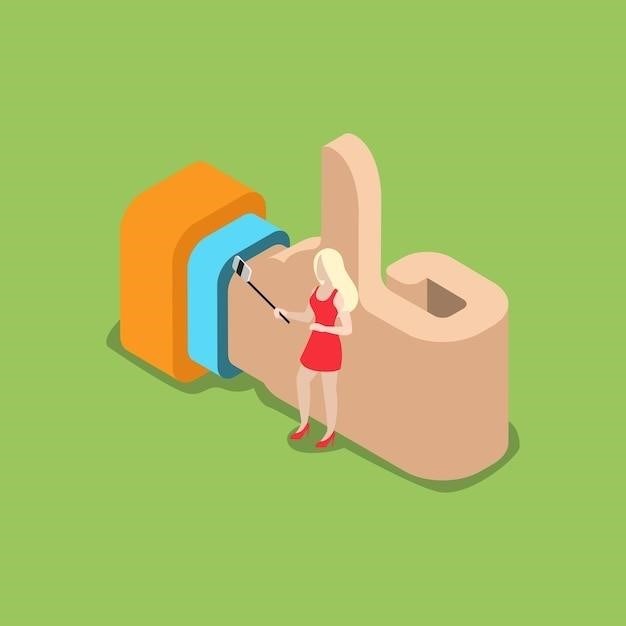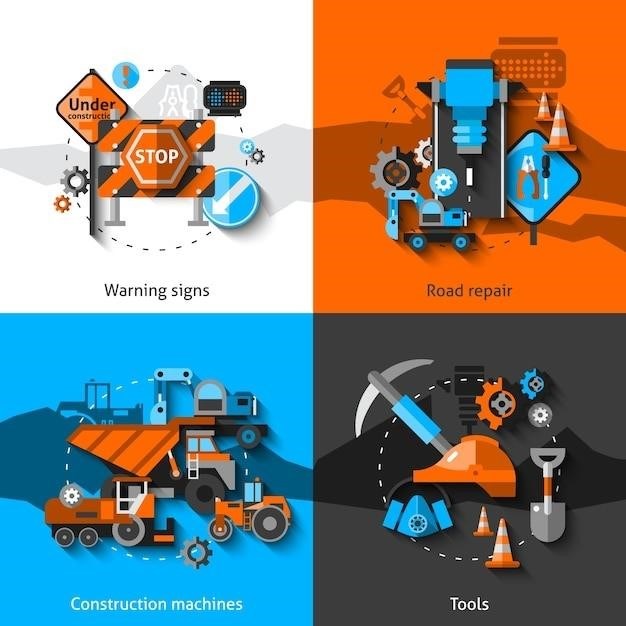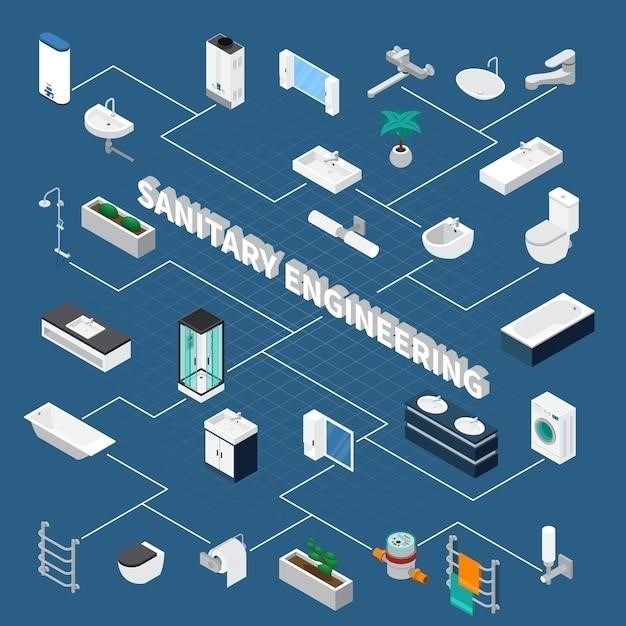
Tap Guide Blocks⁚ A Comprehensive Guide
This guide explores the world of tap guide blocks, essential tools for precise hand tapping. Learn about various types, materials, and applications, from DIY projects to commercial options. Discover how to choose the right tap and drill bit, maintain your block, and troubleshoot common problems for successful threading.
Introduction to Tap Guide Blocks
Tap guide blocks are invaluable tools in machining and metalworking, designed to enhance the accuracy and efficiency of hand tapping operations. These blocks provide a stable and precisely aligned platform for guiding the tap into the workpiece, minimizing the risk of misalignment and broken taps, a common frustration for machinists. The primary function is to ensure the tap enters the pre-drilled hole perfectly perpendicular, crucial for creating clean, consistent threads. This prevents the tap from wandering, which can lead to damaged threads, stripped holes, and ultimately, wasted materials and time. Improperly started taps are far more likely to break, especially when working with smaller tap sizes. Using a tap guide block greatly reduces this risk, especially for those new to tapping or working with delicate materials.
A tap guide block significantly improves the control and feel during hand tapping, enabling the user to maintain a smoother, more even tapping action. This results in higher-quality threads with improved precision. For professionals and hobbyists alike, the investment in a tap guide block pays off by minimizing errors and maximizing the lifespan of expensive taps, contributing to overall efficiency and cost-effectiveness in the workshop.
Types of Tap Guide Blocks⁚ Material and Design
Tap guide blocks come in a variety of designs and materials, each with its own advantages and disadvantages. The simplest designs are often blocks of hardened steel or aluminum with precisely drilled holes sized to accommodate different tap sizes. These are ideal for general-purpose use and are readily available commercially or can be easily fabricated. More complex designs may incorporate features like adjustable bushings to handle a wider range of tap sizes or even integrated depth stops for consistent thread depth. The choice of material is crucial; hardened steel offers superior durability and resistance to wear, especially when working with tougher materials. Aluminum, while less durable, is lighter and easier to machine, making it a more suitable choice for DIY projects or less demanding applications.
Some commercial tap guide blocks feature artistic spiral patterns of holes, while others have a more functional, linear arrangement. The arrangement is often a matter of preference and does not significantly impact the functionality. The crucial design aspect is the precision of the holes, which must be perfectly aligned and sized to prevent binding or misalignment of the tap. Consider also the overall size and shape of the block; a larger block provides greater stability, while a smaller, more compact block is advantageous in confined spaces; The selection of the material and design should depend on the specific needs and the frequency of use, with hardened steel being preferable for frequent use and aluminum suitable for less intensive applications.
Using Tap Guide Blocks for Hand Tapping
Employing a tap guide block for hand tapping significantly enhances accuracy and reduces the risk of tap breakage, particularly when working with smaller tap sizes. Before commencing, ensure the hole is accurately drilled to the correct diameter for the chosen tap. Select the appropriate-sized hole in the guide block that corresponds to your tap. Position the guide block firmly over the workpiece, ensuring its alignment with the pre-drilled hole. Secure the tap in a suitable tap wrench; a T-handle wrench offers excellent control and feel. Insert the tap into the guide block’s hole, ensuring a snug fit.
Begin tapping by applying gentle, even pressure, rotating the tap clockwise. Avoid excessive force; if resistance is encountered, briefly back the tap out slightly to clear chips and then resume tapping. Maintain consistent pressure and speed throughout the tapping process. Periodically back the tap out to clear chips, preventing clogging and potential tap breakage. For longer threads, it may be necessary to remove the tap and guide block periodically to clear chips and prevent thread damage. Once the desired thread depth is reached, carefully remove the tap and clean the threads. The tap guide block ensures a straight, accurate start, reducing the chance of the tap wandering or breaking and leading to cleaner, more consistent threads.
Benefits of Using a Tap Guide Block
Tap guide blocks offer a multitude of advantages, especially when hand tapping. Their primary benefit is ensuring perfectly straight threads. This prevents the tap from deflecting, a common problem leading to broken taps or poorly formed threads, particularly with smaller tap sizes. By guiding the tap accurately, the block minimizes the risk of cross-threading, a frustrating issue that can ruin both the tap and the workpiece. The consistent guidance provided by the block leads to cleaner, more uniform threads, improving the overall quality of the tapped hole and the strength of the resulting threaded connection.
Furthermore, tap guide blocks significantly reduce the effort required for hand tapping, making the process easier and less tiring. This is especially beneficial when working with numerous holes or when dealing with materials that offer higher resistance to tapping. The enhanced control and stability minimize the risk of applying excessive force, which might otherwise break the tap. For professionals and hobbyists alike, the improved efficiency and reduced risk of errors translate to time savings and cost reductions. The use of a tap guide block ultimately results in higher-quality work and a more satisfying experience.
Making Your Own Tap Guide Block⁚ A DIY Guide
Creating a tap guide block is a straightforward project for those with basic machining skills. Start by selecting a suitable material; hardened steel offers excellent durability, while aluminum provides easier machining. The block’s dimensions depend on the tap sizes you’ll be using; ensure sufficient thickness for stability. Accurately drill the guide holes slightly larger than the tap diameters to prevent binding. Consider using a drill press for precise hole alignment and depth control. For smaller taps, counterboring may be necessary to accommodate the tap’s shorter shank. A flat, stable base is crucial for consistent tapping.
Once the holes are drilled, consider adding features to enhance usability. A simple design might involve a single row of holes for different tap sizes. More advanced designs could incorporate multiple rows or even a spiral pattern for easier access. Proper surface finishing will improve the block’s longevity and ease of use. A final grinding or polishing can smooth out any imperfections. After construction, test the block with various tap sizes to confirm proper fit and alignment. Remember, accuracy is paramount; a well-made DIY block will provide years of reliable service.
Commercial Tap Guide Blocks⁚ Features and Selection
Commercial tap guide blocks offer several advantages over DIY versions, primarily precision and durability. Manufactured from hardened steel or other high-strength materials, they ensure long-term performance and resistance to wear. Features like precisely sized and aligned holes minimize the risk of tap breakage and ensure accurate threading. Many commercial blocks feature multiple holes to accommodate a range of tap sizes, often organized in a convenient layout. Some models even incorporate features like built-in depth stops or alignment pins for enhanced accuracy. When selecting a commercial block, consider the tap sizes you’ll be using most frequently. Choose a block with holes that cover your typical needs. Also, check the material and construction; hardened steel is generally preferred for its durability.
Look for blocks with clear markings indicating tap size and hole locations. A robust design with a stable base is essential for preventing slippage during use. Consider the overall size and weight of the block; a larger block offers more stability but may be less portable. Price varies depending on features and material; high-quality blocks are a worthwhile investment, particularly for professional use. Read online reviews and compare different models before purchasing to ensure you are selecting a product that meets your specific requirements and budget. Remember that a high-quality commercial tap guide block will significantly improve the accuracy and efficiency of your tapping operations.
Troubleshooting Common Issues with Tap Guide Blocks
One common problem is tap breakage, often caused by misalignment or using the wrong tap size. Ensure the tap is properly seated and aligned in the guide block before starting. Using a lubricant helps prevent breakage and improves thread quality. Another issue is inaccurate threads, potentially due to a worn or damaged guide block. Inspect the guide block for burrs or damage; if found, repair or replace it. If threads are consistently off, check if the holes in the guide block are correctly sized for your taps; slightly oversized holes can cause inaccuracies. Sometimes, the workpiece itself might be the culprit. Poorly clamped workpieces can move during tapping, leading to crooked threads. Secure the workpiece firmly to prevent movement. If the tap binds or feels excessively resistant during the tapping process, it may be caused by a too-tight fit between the tap and the guide hole. Ensure that the guide block holes are slightly oversized to allow the tap to cut freely.
Another possibility is improper tap selection; the tap might not be suitable for the material being tapped. Using the incorrect drill bit size can also lead to trouble. Always use the recommended drill bit size for your chosen tap. If you encounter difficulty starting the tap, try using a starting tap, which has fewer flutes and a sharper point, before moving to the second or finishing tap. If the tap continues to break or produce poor threads, consider checking for underlying issues, such as dull cutting edges on the tap itself. Regular maintenance, including cleaning and lubrication, will help prolong the life of your tap guide block and ensure optimal performance.
Tap Guide Blocks and Different Tap Sizes
Tap guide blocks are designed to accommodate a range of tap sizes, typically indicated by the diameter and thread pitch. A single block might feature multiple holes, each sized to precisely guide a specific tap. Smaller taps, such as those used for miniature screws or electronics, require smaller and more precisely drilled guide holes to prevent misalignment and breakage. Larger taps, on the other hand, need correspondingly larger and sturdier guide holes to accommodate their greater diameter and cutting forces. The material of the tap guide block must be robust enough to withstand the stresses of tapping, especially with larger taps. The design of the guide block itself should be considered; some blocks have simple, straight-through holes, while others incorporate features like counterbores to better accommodate the tap’s shank. A counterbore is particularly useful with shorter taps, which may need additional support near the cutting end. When selecting a tap guide block, ensure compatibility with your chosen tap sizes. Consult the block’s specifications to determine the range of sizes it can handle. Using an inappropriately sized guide hole can lead to inaccurate threads or tap breakage. It’s also crucial to choose a tap guide block that is made from a suitably hard and durable material. Some are constructed from hardened steel or tool steel for longevity, while others are made from softer materials like aluminum for easier machining or when dealing with less demanding applications.

Safety Precautions When Using Tap Guide Blocks
While tap guide blocks significantly enhance tapping accuracy and reduce the risk of tap breakage, safety precautions remain crucial. Always wear appropriate safety eyewear to protect your eyes from flying debris or potential tap breakage. Ensure the workpiece is securely clamped or held in place to prevent movement during the tapping process; a shifting workpiece can cause the tap to bind or break. Use a tap wrench that fits the tap snugly and provides adequate torque control, avoiding excessive force that can lead to tap breakage or workpiece damage. Never apply excessive pressure when tapping, allowing the tap to cut freely. If you encounter resistance, stop and investigate the cause; forcing the tap can result in breakage. Before commencing, ensure the tap guide block is properly aligned with the workpiece and the hole to be tapped. Misalignment can lead to crooked threads or damage to the tap or workpiece. When working with smaller taps, extra caution is needed due to their fragility. Consider using a lubricant to reduce friction and improve the cutting process; Regularly inspect your tap guide block for signs of wear or damage. A damaged block can compromise the accuracy and safety of the tapping operation, potentially leading to tap breakage or substandard threads. Proper disposal of broken taps is also vital; ensure broken tap pieces are carefully removed and disposed of to prevent injury. Always consult relevant safety guidelines and materials safety data sheets (MSDS) for any lubricants or other materials used during tapping.
Maintaining and Caring for Your Tap Guide Block
Choosing the Right Tap and Drill Bit Combination
Selecting the correct tap and drill bit combination is paramount for successful tapping. The drill bit size must be appropriate for the tap’s size and thread pitch to provide sufficient clearance for the tap’s cutting edges. Using a drill bit that’s too small will result in a tight fit, potentially causing the tap to bind, break, or create inaccurate threads. Conversely, a drill bit that’s too large will leave insufficient material for the tap to engage effectively, leading to weak threads or stripping. Consult a tap drill size chart or online resource which provides recommended drill bit sizes for various tap sizes and thread types (e.g., metric, UNC, UNF). These charts consider the tap’s root diameter and the desired thread engagement. Factors such as the material being tapped also influence the choice of drill bit. Harder materials may require a slightly larger drill bit to reduce the cutting force on the tap. Ensure the drill bit is sharp and in good condition; a dull bit can lead to inaccurate holes and increase the risk of tap breakage. Before tapping, clean the drilled hole to remove any chips or debris that could interfere with the tap’s engagement. When working with small taps, using a pilot hole can further improve accuracy and reduce the risk of breakage. The pilot hole should be slightly smaller than the tap’s root diameter, guiding the tap’s initial engagement. Properly selecting the drill bit ensures a smooth tapping process, minimizes the risk of tap breakage, and guarantees high-quality threads. Remember to double-check your selections before drilling and tapping to prevent errors.
























